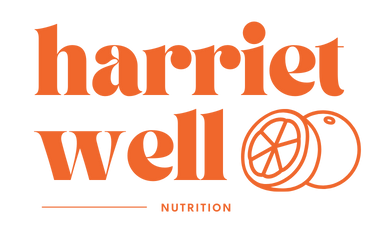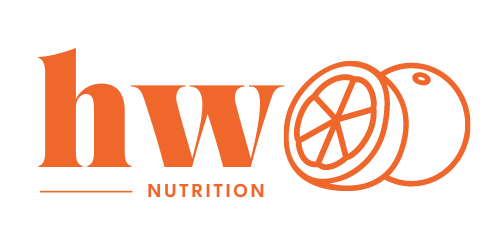The Hunger Scale - & how to use it
After years of diets, restrictive eating and trying to control your appetite/food its easy to become out of touch with your internal cues, such as the body’s hunger and fullness signals. Learn what the hunger scale is and how to use it effectively so that you have a tool that can help you to get back in touch with your body and know how much and when to eat.
Diet culture leads us to believe that we need to have rules, count calories and keep track of our food in order to be in control, and that without these in place you wouldn’t be able to manage your eating.
And yes, if you have been following rules and diets for a long time then when you do eventually remove these and let go of the rules, it can feel like you are out of control. These feels of being out of control, then reinforce your belief that you need the rules - when in fact these are exactly what is tripping you up in the first place, it’s not a lack of will power or a personally trait. It all comes back to restriction.
You already have the skills and tools to guide you in what, when and how much to eat. Your body cues for hunger and fullness are one of these. But you may need to relearn how to listen to these and use them effectively.
Hunger and fullness cues
Your hunger and fullness cues are there for a reason - to let you know when you need to eat and when to stop. This may sound simple and straight forward, however for many of us we do not listen to or are out of touch with these signals.
These cues are controlled by the hypothalamus in the brain. It works by regulating your appetite depending on the energy and energy stores within the body. If you are running low on energy it will send signals to increase appetite and signal hunger. Simply a hunger cue sent from the hypothalamus means you need food. Just like the feeling of thirst is a signal to drink water.
Your individual energy needs change daily depending on your activity, hormones, metabolism, sleep and more. Your body will intuitively regulate these hunger and fullness signals to match these energy needs. Therefore, listening to these will help you to appropriately respond to the changing needs.
Relearning to listen to signals and cues
Even if you feel like you no longer have or know what hunger and fullness feels like or you think these signals are “broken” - you can get back in touch with them and relearn how to listen and use these cues.
The first step in relearning these feelings is to commit to eating regularly and adequately throughout the day. This often means eating a balanced and satisfying meal or snack every 3-4 hours. A balanced meal contains carbohydrates, protein, healthy fat and fibre.
Secondly, use each of these meals and snacks as an opportunity to learn and practice listening to your hunger and fullness cues. This may be really difficult to start with, but the hunger scale is a great tool to help out.
The hunger scale
The hunger scale is an intuitive eating tool that is used to help better understand different levels of hunger and fullness before, after and during a meal. It also can help you to understand how you respond to the different levels and feelings.
It is made up by a scale of 1-10. Each number on the scale represents a different level of hunger or fullness. See diagram below.
How to use the hunger scale
Using the hunger scale is simple. Take a couple of seconds to think to yourself and evaluate how you feel. Then pick a number on the scale that fits this feeling.
The levels of the scale will feel different to different people, however these are some common feelings at each stage. You may just feel one or a few of these, you don’t need to feel all symptoms.
Can you identify with one of the levels below now?
1 - Very uncomfortable hunger, dizzy/faint, severe headache, nauseous, so hungry you’re not hungry
2 - uncomfortable hunger, hangry, starting to get shaky/dizzy, slight headache, significant stomach gnawing
3 - meal hungry, stomach feels empty but not uncomfortably so, maybe slight stomach gnawing, low energy, thinking a lot about food
4 - thinking about food, snack hunger, energy levels slightly low, slight empty feeling to stomach but no pangs
5 - neutral, how you feel a couple hours after a satisfying meal
6 - filling up, but not full, stomach is no longer empty and is starting to feel more full, but you still desire food
7 - satisfied, but not stuffed, stomach feels satiated and there is a roundness to it, but you are not physically uncomfortable
8 - slightly uncomfortably full, how you feel leaving a good restaurant, slightly distended/fullness of your stomach
9 - Christmas Day full, uncomfortably full, food coma, feel like you have to unbutton or change pants
10 - binge level of fullness, so full that you feel physically sick
The goal isn’t to be able to perfectly identify yourself on the scale every time. It is a tool to help you get back in touch with your hunger and fullness cues. Sometimes it will be harder to determine where you sit, but with practice will become much easier over time.
Ideally, you should start eating around 3-4. At this stage you are not uncomfortably hungry, your blood sugars haven’t dropped too low and your can still make rational and intentional food choices.
There is not right or wrong level to stop eating. This will be dependent on a number of things such as your schedule, eating out, and how you feel through the day. It’s good to aim for about a 7 most of the time, that’s a level that will leave you feeling satisfied and energised until your next meal or snack. However, sometimes an 8 will feel better or maybe a 6 if you find you work better off a smaller/lighter meal, in this case just have a snack earlier.
The hunger scale can be used throughout the day, not just when you are eating to help check in with how you are feeling and relearn to listen to your body. By checking in throughout the day you are more likely to pickup more subtle cues of hunger earlier on. An idea when getting started is to set a timer a few times throughout the day as a reminder to check in with yourself and your hunger.
Checking in during a meal is also a good idea, for example evaluating how you are feeling before eating, at the middle of your meal and then again after. This is a way of practicing more mindful eating, a great habit to get into.The more you practice the better you will get a listening to the cues of hunger and fullness and also learning what feels good for you and your body.
Finally, the hunger scale is a tool not a rule. If the hunger scale feels too much like a diet or rules to eat by then I suggest, leaving the numbers for now and focusing on honouring your hunger first, learning your fullness can be added later on.
Hopefully this is a helpful tool for you to use as you learn to listen and trust your body again. Remember this is just one tool you can use to get back in touch with your hunger and fullness cues.
It is feel overwhelming at first, start small it will get easier with practice, be kind to yourself and get support if you need it - feel free to reach out to chat further with myself about healing your relationship with food and become your very own food, mind & body expert.

